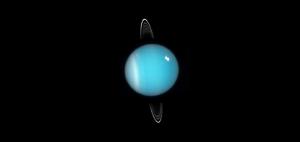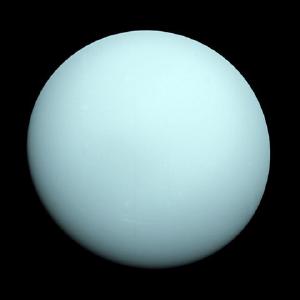Blog
Funny
1 April 2014
 NASA
NASAUranus is often considered the funny planet. Pronounce its name in a particular way and you are reminded of a particular portion of your posterior. But even when given a more civilized pronunciation, Uranus remains a funny planet. Its characteristics are somewhat different from the others, which reveals a violent past.
Unlike the other planets, Uranus is a world on its side. It’s axial tilt is about 98 degrees, as opposed to Earth’s 23-degree tilt. This means that seasons on Uranus are decades long. The Uranean year is about 84 Earth years long, so for more than 40 years one hemisphere of Uranus faces the Sun while the other is in shadow. During “summer” the Sun is generally high overhead, and “winter” brings the long dark.
 NASA/JPL/Voyager mission
NASA/JPL/Voyager missionAnother feature of Uranus is that its core seems to produce much less heat than other gas planets. Neptune, for example is of a similar size, but gives off 2.5 times more heat. This means the atmosphere of Uranus doesn’t have large storm features seen on Jupiter or Saturn. When Voyager 2 visited the planet, the visible light images it took showed only faint features against what mainly looked like a pale blue sphere.
It has generally been thought that the tilt and cooler core of Uranus was due to a collision with a large planetoid in its youth, but more recent computer simulations show that such a single impact would produce moons that orbit in retrograde motion. Uranus has five major moons (and several smaller ones) which rotate in the same direction as Uranus itself. So it is unlikely that a single impact led to its modern orientation. Instead it is likely that Uranus experienced multiple impacts leading to its current state.
Uranus also has the distinction of being the first “discovered” planet. Earlier ones being known since the dawn of time. When astronomers began to measure its orbit, they found that it was a bit “funny”, and deviated from the motion predicted by Newtonian gravity. This led some astronomers to speculate that an even more distant planet might be pulling on Uranus gravitationally, which led to the discovery of Neptune.
But that’s a story for another time.
Up next: Neptune